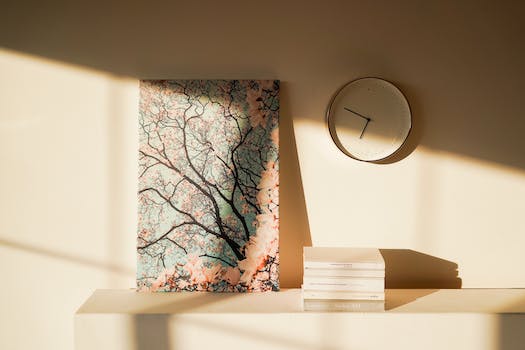

-
Table of Contents
Unveiling the Beauty of Architectural Craftsmanship.
Introduction
Architectural sketches, models, and buildings are not just functional structures, but also works of art that showcase the creativity and vision of architects. These forms of artistic expression allow architects to communicate their ideas, explore different design possibilities, and bring their visions to life. Through sketches, architects can capture the essence of a concept, while models provide a tangible representation of a design. Finally, buildings themselves become the ultimate expression of architectural artistry, blending form, function, and aesthetics to create spaces that inspire and captivate. In this exploration, we will delve into the artistry behind architectural sketches, models, and buildings, appreciating the unique blend of creativity and technical skill that goes into their creation.
The Evolution of Architectural Sketching Techniques
The art of architectural sketching has a rich history that spans centuries. From the early days of cave paintings to the intricate drawings of the Renaissance, architects have used sketches to communicate their ideas and bring their visions to life. Over time, the techniques and tools used in architectural sketching have evolved, reflecting advancements in technology and changes in artistic styles.
In the early days of architectural sketching, architects relied on simple tools such as charcoal and chalk to create their drawings. These sketches were often rough and lacked the level of detail that we see in modern architectural drawings. However, they served their purpose by providing a basic visual representation of the architect's ideas.
As the Renaissance period dawned, architectural sketching techniques became more refined. Architects such as Leonardo da Vinci and Andrea Palladio used perspective drawing techniques to create more realistic and detailed sketches. These drawings showcased the architect's understanding of geometry and proportion, and they were often used as a starting point for the construction of buildings.
The invention of the printing press in the 15th century revolutionized the field of architectural sketching. Architects could now reproduce their drawings more easily, allowing for wider distribution and greater influence. This led to the development of architectural treatises, which were books that contained detailed drawings and explanations of architectural principles. These treatises became essential resources for aspiring architects and helped to spread new ideas and styles throughout Europe.
In the 19th century, advancements in photography and printing technology further transformed architectural sketching. Architects could now use photographs as a reference for their drawings, allowing for greater accuracy and detail. This period also saw the rise of architectural competitions, where architects would submit their sketches and models for a chance to win a commission. These competitions pushed architects to refine their sketching techniques and create more innovative and visually striking designs.
The 20th century brought even more changes to architectural sketching techniques. The advent of computer-aided design (CAD) allowed architects to create digital models and renderings of their designs. This technology revolutionized the field, making it easier and faster to create and modify architectural drawings. However, despite these advancements, many architects still value the artistry and personal touch of hand-drawn sketches.
Today, architectural sketching techniques continue to evolve. Architects now have access to a wide range of tools and mediums, from traditional pen and paper to digital tablets and software. Some architects prefer the tactile experience of drawing by hand, while others embrace the precision and efficiency of digital tools. Regardless of the medium, the goal remains the same – to communicate ideas and bring architectural visions to life.
In conclusion, the evolution of architectural sketching techniques reflects the changing needs and advancements in technology throughout history. From simple charcoal drawings to intricate digital renderings, architects have used sketches to communicate their ideas and push the boundaries of design. Whether hand-drawn or digitally created, architectural sketches continue to be an essential part of the creative process, capturing the artistry and vision of the architect.
Unveiling the Intricate World of Architectural Models

Exploring the Artistry of Architectural Sketches, Models, and Buildings
Unveiling the Intricate World of Architectural Models
Architectural models are an essential tool in the design process, allowing architects to visualize and communicate their ideas effectively. These intricate creations provide a tangible representation of a building's form, scale, and spatial relationships. From simple cardboard mock-ups to highly detailed 3D printed models, architectural models come in various forms, each with its own unique artistic qualities.
Architectural models serve as a bridge between the architect's imagination and the final built structure. They allow architects to experiment with different design concepts, test the feasibility of their ideas, and refine their vision before construction begins. By creating physical representations of their designs, architects can better understand how their buildings will interact with the surrounding environment and how people will experience the space.
The process of creating an architectural model is a meticulous one, requiring precision and attention to detail. Architects often start with rough sketches and drawings to explore different design possibilities. These initial sketches serve as a foundation for the model-making process, providing a visual reference for the architect to work from.
Once the initial sketches are complete, architects move on to creating a more refined version of their design. This is where architectural models come into play. Architects use a variety of materials, such as foam, wood, or plastic, to construct their models. They carefully cut, shape, and assemble these materials to bring their designs to life.
The level of detail in architectural models can vary greatly depending on the purpose of the model. Some models may be simple massing models, which focus on the overall form and scale of the building. These models provide a basic understanding of the building's shape and size but lack intricate details.
On the other hand, highly detailed models showcase every aspect of the building, from the smallest architectural features to the interior furnishings. These models are often used for presentations or exhibitions, allowing viewers to fully immerse themselves in the architect's vision.
Architectural models are not only functional but also artistic in nature. Architects carefully consider the composition, materials, and colors used in their models to create visually appealing representations of their designs. They pay attention to the play of light and shadow, the texture of surfaces, and the overall aesthetic of the model.
Architectural models also serve as a means of communication between architects, clients, and other stakeholders. They provide a tangible representation of the architect's vision, making it easier for others to understand and engage with the design. Clients can physically interact with the model, gaining a better understanding of how the building will look and feel.
In addition to their practical and communicative purposes, architectural models also hold artistic value. They are often displayed in galleries and museums, showcasing the creativity and skill of the architect. These models are not just functional objects but works of art in their own right, capturing the essence of the architect's design philosophy.
In conclusion, architectural models are an integral part of the design process, allowing architects to explore, refine, and communicate their ideas effectively. These intricate creations serve as a bridge between the architect's imagination and the final built structure. From rough sketches to highly detailed models, each step in the model-making process requires precision and attention to detail. Architectural models are not only functional but also artistic, showcasing the creativity and skill of the architect. They provide a tangible representation of the architect's vision, allowing clients and other stakeholders to fully engage with the design. Whether displayed in galleries or used as a tool for design development, architectural models unveil the intricate world of architecture and its artistry.
Captivating Architectural Marvels: Iconic Buildings Around the World
Exploring the Artistry of Architectural Sketches, Models, and Buildings
Architecture is a captivating art form that combines creativity, engineering, and functionality. From the initial sketches to the final construction, every step of the architectural process is a testament to the artistry and vision of the architect. Architectural sketches, models, and buildings themselves are all fascinating aspects of this field, each showcasing the unique talents and ideas of their creators.
Architectural sketches are the first glimpse into the mind of an architect. These preliminary drawings capture the essence of a design, conveying the overall concept and layout of a building. They are often quick and loose, allowing the architect to explore different ideas and possibilities. Sketches can be done by hand or digitally, with each method offering its own advantages. Hand-drawn sketches have a raw and organic quality, while digital sketches allow for greater precision and flexibility. Regardless of the medium, architectural sketches are a crucial part of the design process, serving as a visual representation of the architect's vision.
Once the sketches are finalized, architects often create models to further develop and refine their designs. Architectural models are three-dimensional representations of a building, allowing architects and clients to better understand the scale, proportions, and spatial relationships of the design. Models can be made from a variety of materials, such as wood, cardboard, or even 3D-printed plastic. They provide a tangible and tactile experience, allowing viewers to physically interact with the design. Architectural models are not only practical tools for architects but also works of art in their own right, showcasing the craftsmanship and attention to detail that goes into creating a building.
Finally, the culmination of an architect's vision is the construction of the building itself. From towering skyscrapers to intricate museums, iconic buildings around the world are testaments to the power of architecture. These architectural marvels captivate us with their grandeur and beauty, often becoming symbols of cities or countries. The Sydney Opera House, with its distinctive sail-like roofs, is an iconic example of modern architecture. The Taj Mahal, with its intricate marble façade and symmetrical design, is a testament to the beauty of Islamic architecture. These buildings not only serve practical purposes but also inspire and evoke emotions in those who experience them.
The artistry of architectural sketches, models, and buildings is not limited to their visual appeal. Architecture also has the power to shape our experiences and influence our emotions. The design of a building can create a sense of awe, tranquility, or even playfulness. The Guggenheim Museum in Bilbao, with its curvaceous and fluid design, invites visitors to explore and discover. The Sagrada Familia in Barcelona, with its towering spires and intricate stained glass windows, creates a sense of reverence and spirituality. These buildings go beyond mere structures; they become immersive experiences that engage all our senses.
In conclusion, the artistry of architectural sketches, models, and buildings is a testament to the creativity and vision of architects. From the initial sketches that capture the essence of a design to the three-dimensional models that bring it to life, every step of the architectural process is a work of art. The iconic buildings around the world, with their grandeur and beauty, inspire and captivate us. Architecture is not just about creating functional spaces; it is about creating experiences that evoke emotions and leave a lasting impression.
Q&A
1. What is the purpose of architectural sketches?
Architectural sketches serve as a visual representation of an architect's ideas and concepts for a building or structure.
2. How are architectural models used in the design process?
Architectural models provide a three-dimensional representation of a building design, allowing architects to assess its scale, proportions, and spatial relationships.
3. What role do buildings play in the artistry of architecture?
Buildings are the final realization of an architect's vision and serve as a medium for artistic expression, showcasing unique design elements, materials, and spatial arrangements.
Conclusion
In conclusion, exploring the artistry of architectural sketches, models, and buildings allows us to appreciate the creative process and craftsmanship involved in designing and constructing structures. These artistic representations not only showcase the vision and ideas of architects but also serve as valuable tools for communication and understanding between designers, clients, and the public. The intricate details, unique perspectives, and imaginative concepts found in architectural sketches and models bring life to the initial concepts and provide a glimpse into the future built environment. Furthermore, the final realization of these designs in physical buildings showcases the fusion of art and functionality, leaving a lasting impact on our surroundings and enriching our lives.












